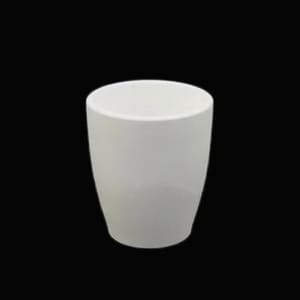In the laboratory, some special instruments are often used to realize the heating operation, such as quartz crucible, alumina crucible, etc. The quartz crucible is widely used in the experiment because of its stable performance and heat resistance, however, because the main component of the quartz crucible is silica, so it causes that it cannot be used to heat certain substances when heating.
1. Caustic soda (NaOH).
In industry, sodium hydroxide is often referred to as caustic soda, kerosene, or caustic soda. This is because a more concentrated solution of sodium hydroxide splashed on the skin can corrode the epidermis and cause burns. It has a solubilizing effect on proteins and is strongly irritating and corrosive.
Quartz crucibles are composed of silica, an inorganic substance with the chemical formula SiO2. The long-range ordered arrangement of silicon and oxygen atoms forms crystalline silica, and the short-range ordered or long-range disordered arrangement forms amorphous silica.
The two will react with each other, SiO2 + 2NaOH = Na2SiO3 + H2O

2. Fused sodium carbonate crystals.
Silicon dioxide is a colorless crystal, which is an acidic oxide; sodium carbonate is a white solid, and the aqueous solution is strongly alkaline. Sodium carbonate reacts with quartz crucible at high temperature to produce sodium silicate and carbon dioxide; the chemical equation is SiO2 + Na2CO3 = Na2SiO3 + CO2↑.
3. It cannot be used to heat caustic soda, alkali metal carbonates, and alkaline earth metals and their oxides.
Note that when operating in the laboratory, determine whether it will react with silica first, and then heat it with a quartz crucible after determining that it will not react. Generally speaking, it is mainly these chemical products that cannot be heated.
Ceramic Parts India Inc.CO., Ltd, we are a global ceramics manufacturer and supplier, crucibles are shipped worldwide, please visit our website for more details. www.ceramicpartsindia.com